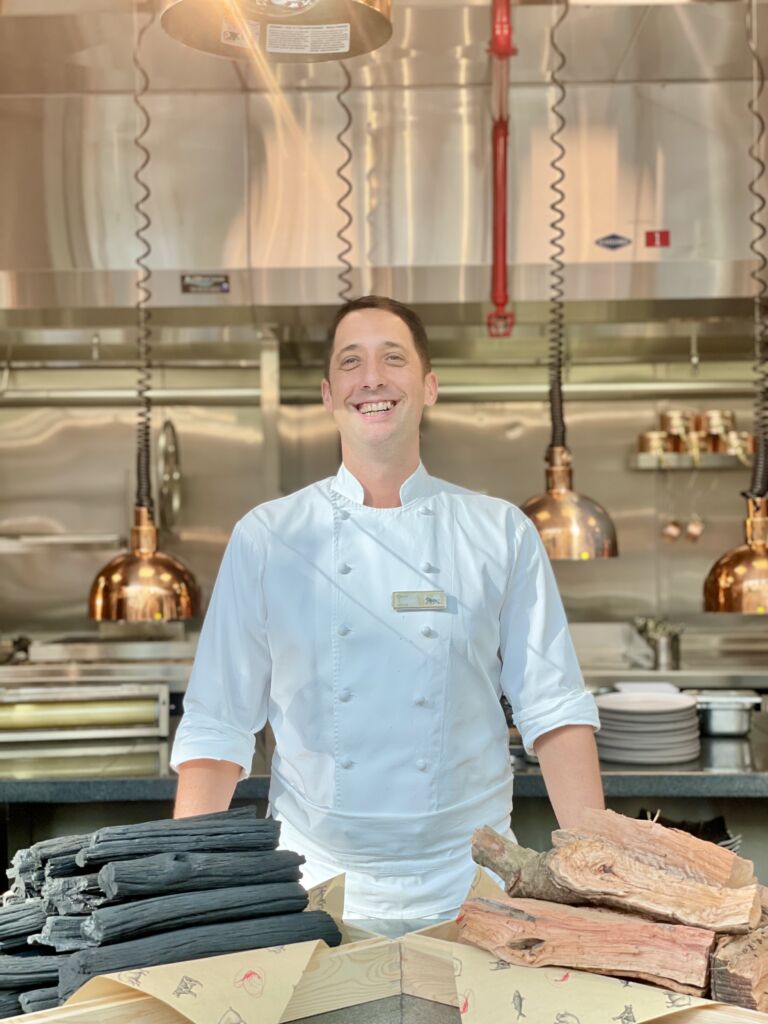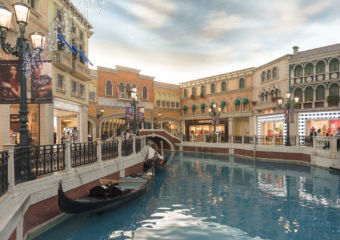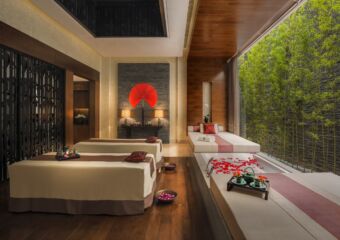With a penchant for cooking with wood-fire Grill 58’s new Chef de Cuisine Conor Beach saw in the eclectic signature restaurant in MGM Cotai the opportunity to craft food that is simultaneously refined, relatable, and seemingly simple, from the Earth’s most pristine ingredients. With years of experience in the United States, Europe, and Asia under his belt, the Michigan-born chef is devoted to pushing the boundaries of dry-aging exceptional cuts of meat and beyond. We spoke to Chef Conor Beach and learned all about his journey in the culinary arts, his greatest dining experiences of all time, his vision for Grill 58, and its concept.
Firstly, congratulations on your role as Chef De Cuisine at Grill 58 and welcome to Macau! How have you found your first year?
From a normal everyday life perspective, it’s a relaxing change of pace versus other cosmopolitan cities I’ve lived in. People in Macau are very friendly and relaxed. It’s a smaller, more compact city, which makes it more personal. I would say that the guests at Grill 58 share that same spirit: they’re welcoming, relaxed, and really just want to have a nice dinner out. The language is a bit more of a challenge here for me, although I would say that I’m lucky that in my kitchen, all team members speak English.

What made you decide to take on this opportunity in Macau? Have you visited the city before?
I had been to Macau twice before, maybe three times, but never even for 24 hours each time, just for really quick trips. What drew me to Macau was the concept at Grill 58: dry-aging, cooking with fire, charcoal grills, lychee wood, the Josper oven, and being able to focus on those techniques in a five-star resort. It’s a great experience and an opportunity to create food that is both refined yet simple and relatable at the same time. I like working in nice restaurants but I also like to work in restaurants that my friends can afford to dine at.
How did you become a chef? Could you tell us more about your background?
I grew up in a large family in the U.S.I have five siblings; my dad is one of twelve while my mother is one of nine. I became a chef because I love food, I love cooking and my mom never really had the time to always cook when we were little. She cooked every night but back then, raising six kids, and with my dad out traveling for work all the time, the food was not the greatest! (laughs) She’s a very good cook now though. I think I first started cooking around eight years old. My older brother, sister, and I would make chocolate chip cookies, pancakes, French toasts, and waffles. Later on, my sister came back from a trip to Paris with our parents and introduced us to crêpes. If I wanted to eat something, I would look in a cookbook, find a good recipe, and try to cook it. By the age of 10 or 12, I’d go to friends’ houses and we would spend a few hours making crêpes (crêpes)for the afternoon.
After college, I took some time to travel, try new food and reflect on life. I was saving up money so I would cook for myself a lot. I spent months on a hippie-commune sailboat, sailing around Papua New Guinea and the Philippines. We would fish, trade for food, and get goods in different ports. Twice a week it was my task to cook breakfast, lunch, and dinner for all fourteen of us. That was the moment that I decided I needed to give culinary a try, professionally. I wanted to have a career where I enjoyed going to work.
What studies did you pursue in college?
History and economics. What I learned during university that is most applicable in the work I do is understanding research and how that relates to my creative process. It’s about the storing up of knowledge, learning new techniques, and finding a way to apply that to a new creation, whether that is a research paper or a new dish at a restaurant.
When did you land your first job in culinary?
After I got back to the U.S. after my trip traveling around the world (14 months and as many countries), I started working at a fine-dining restaurant in a resort town in Colorado. It was a great experience and I got really lucky with that job. I was a prep cook, I did cold kitchen and pastries. We had a great team in the kitchen with chefs who were willing to show me how to do things, teach me and tell me when I was wrong. I also learned how to be humble, which is really hard, sometimes (laughs). We were open for dinner only so I would go snowboarding in the morning. It was a great work/life balance and one of the reasons I picked that job over others (more importantly, it was the best restaurant in town).
You’ve worked across the United States, Europe, and Asia. How has the diverse culinary journey shaped you and influenced your approach to your creations?
When conceptualizing a new dish, the taste memories, techniques, and new ingredients I’ve come across, or recipes that I’ve read about come to mind; they’re part of the research and development process All the puzzle pieces are there, and I’m just waiting for that “aha” moment where everything comes together.
We’re expanding the ingredients we work with at Grill 58, especially by introducing more fish and vegetables. Oftentimes we place orders based on seasonality and when the produce reaches our kitchen, we may find that certain produce goes even better with a different dish than we had originally imagined. We have to balance all of those taste memories and ideas with spontaneity. It’s as close to market-based cooking as we can get in Macau.
Do you have any culinary idols?
There are many chefs I’ve looked up to throughout different periods in my career, most of whom I admire from afar because I could only read their cookbooks (before) or look at their pictures on social media (now). I admire the way some chefs in the U.S. conceptualize food and the amount of time they put into developing recipes. I’m also a bit jealous of all the time they have for research and development! (laughs) It doesn’t have to be complex in terms of execution, sometimes it’s deceptively simple, but it is also inclusive, flavourful, pretty, and has a combination of textures. Also, it’s not wasteful.
There are chef friends who I have worked with throughout the years that have come into their own as chefs, opened their own restaurants and it’s amazing to see what they’ve been able to achieve. There are other chefs whose food I’ve been able to try, appreciate what they are doing, and really be blown away. However, I’m more mesmerized by the taste of food and overall experience, than having a chef-idol. I’ve thought a lot about my memories of food and I can talk about the meals I’ve had that have blown me away. I can tell you my top five greatest dining experiences of all time.
Please do!
The most amazing meal of my entire life was probably at the Noma pop-up out in the jungle, behind the beach in Tulum, Mexico. Everything was perfect, from the lighting at the tables, the sand on the floor, the music just the right volume to the wine-pairing and the attentive, personal service. It’s hard to explain how they got everything so right. They cooked in the Noma style, all the food was so good and thought-provoking. Some of the ingredients and preparation on their menu take two to three months just to make, only to have them for the six-month pop-up. I flew halfway across the world for that meal, but not solely. The Noma trip to Mexico happened in part because of my love of another restaurant called Hartwood, located out in the jungle in Tulum too. The chefs have no electricity, cook everything with fire, and make everything fresh every day. They have very little water and very little produce, which makes it all even harder. Another over-the-top experience was at Akalarre, located just outside of San Sebastián in Spain, and my first experience at a Michelin three-star restaurant. I got to see how a Michelin three-star kitchen is organized and see how thirty to forty chefs cook for just thirty people. Also located in San Sebastián is Arzak, where I had just a perfect, perfect meal. Last but not least, Asador Etxebarri, which at the time I visited was becoming famous and is now world-famous and one of The World’s 50 Best Restaurants. This one too is located in the Basque Country. For decades Chef Victor Arguinzoniz was cooking with fire with the most pristine ingredients from the local area, and still is doing the same thing today.
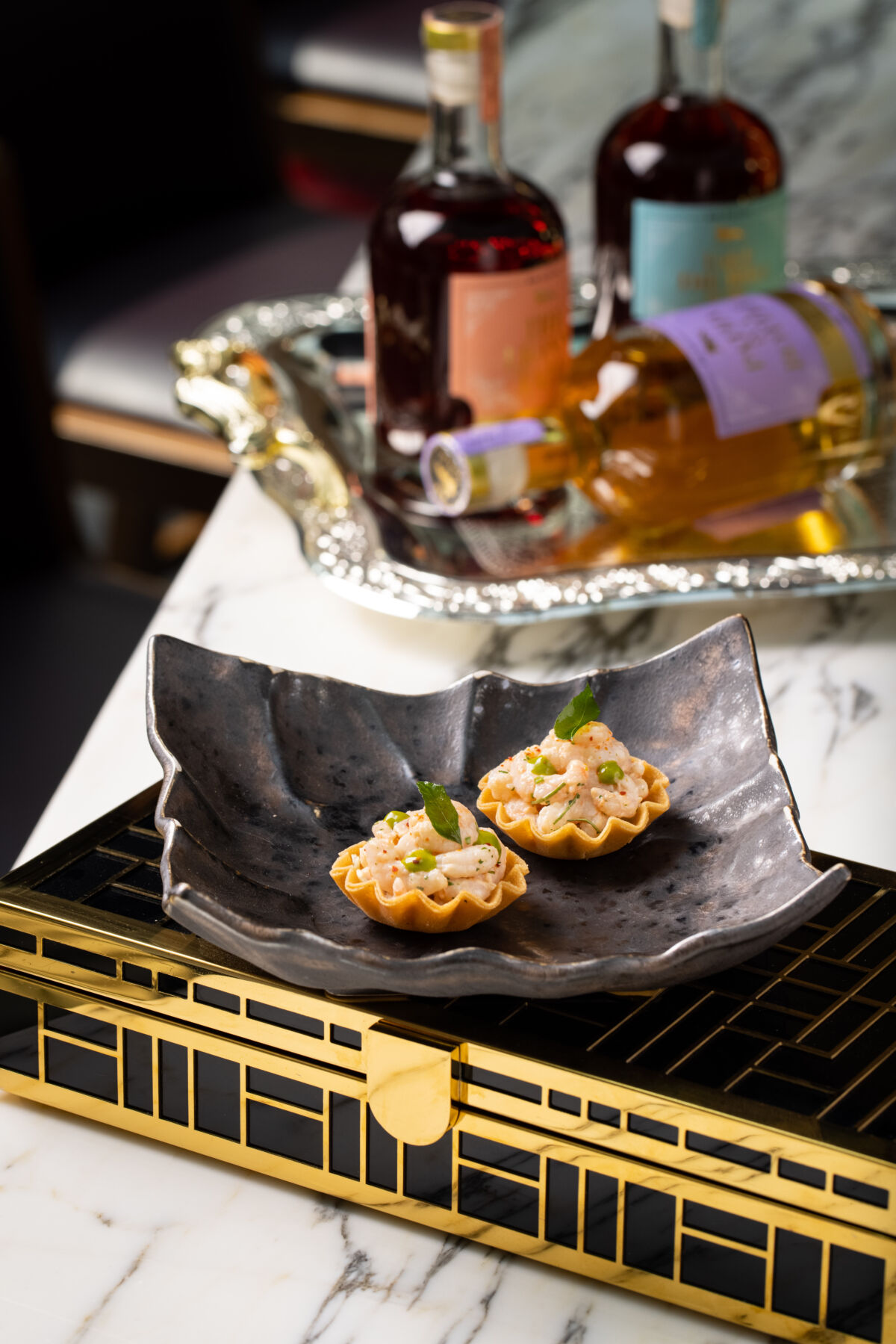
Shrimp Cocktail Tart; Photo credit: MGM Cotai
Grill 58 is divided into three concepts: bar, grill, and teppanyaki. Can you explain this in more detail? Can you recommend one dish from each concept?
The concept at Grill 58 ultimately is a “celebration of the grill”. The teppan, as a style of a grill on its own, is rather popular with our local crowd, and we are currently fine-tuning new menus and we also do special premium ingredient-focus themed pop-ups (Teppanyaki Escapades) every couple of months just for one or two nights. That concept is strong and well-established as it is, we are going to spice things up just a little bit. As for a recommendation, you can’t really separate one dish from the experience; it’s meant to be enjoyed as a set menu. The teppanyaki is a multicourse and multisensory experience that is all about being in front of the chefs who are cooking for you. Its value lies in the interactive experience as a whole.
At Grill 58 and Bar 58 we are really focused on embracing the spirit of the grill, especially with the Japanese charcoal (binchotan) and lychee wood grills, as well as the charcoal oven and the dry-aging room. We want to have that be an element that touches almost all of the food served in the restaurant and bar. The food still relies on classic flavors but with a modern approach, more playful in style. Bar 58 is a wine bar with 4,000 bottles and it offers an impressive selection of by-the-glass wine, one of the widest I’ve seen in Macau. We’ve recently introduced three new bar snacks: Shrimp cocktail tarts with cold-water prawns and Thai basil; Tuna tartare toast with miso dressing and shaved daikon on grilled brioche, and Caviar and potato with potato and buckwheat crullers, Osciètre Prestige Caviar and horseradish crème fraîche. They are also available on the a-la-carte menu, something I thought was important as having these bite-sized snacks on both menus fits with the Chinese concept of sharing food, just like dim sums.
We want Grill 58 to be a convivial, sharing experience for our guests. Since we will get to signature dishes next, my recommendation is a dish that isn’t a signature, a dish from our new menu that we just launched: Pan-fried Petuna ocean trout. It’s an excellent product from Australia but for me what brings a dish together is the garnish and the sauce. We’ve been working more with seasonal produce at Grill 58. We have really nice Savoy cabbages from France and what we do is remove the outer leaves and cook them in Japanese dashi, chop the core and ferment it for a week, make sauerkraut and that’s mixed in with roasted beetroot, dill and later rolled all up into the Savoy cabbage leaves, which we then grill in the Josper oven, which adds a nice charred, smoky flavor to it. The fish is pan-fried but we found a way to bring the grill into the garnish. This dish has elements of cooking that I really like: besides using one ingredient in multiple ways, it also relates back to my Polish maternal grandmother who used to make a typical Polish snack (which I hated back then!) because the packaging is inspired by those.
We recently launched the Sunday Brunch too, the daytime environment at Grill 58 with the sun coming in through the grid is really special. Our brunch is focused on the grill. Guests can have their fill, there’s a lot to eat, and have all the drinks they wish. We only open during lunchtime once a week and it’s for Sunday brunch. It’s focused on the grill. It’s super kid-friendly, we have a special kids brunch menu, and the kids love the flying dolphins on the Sea Odyssey show.
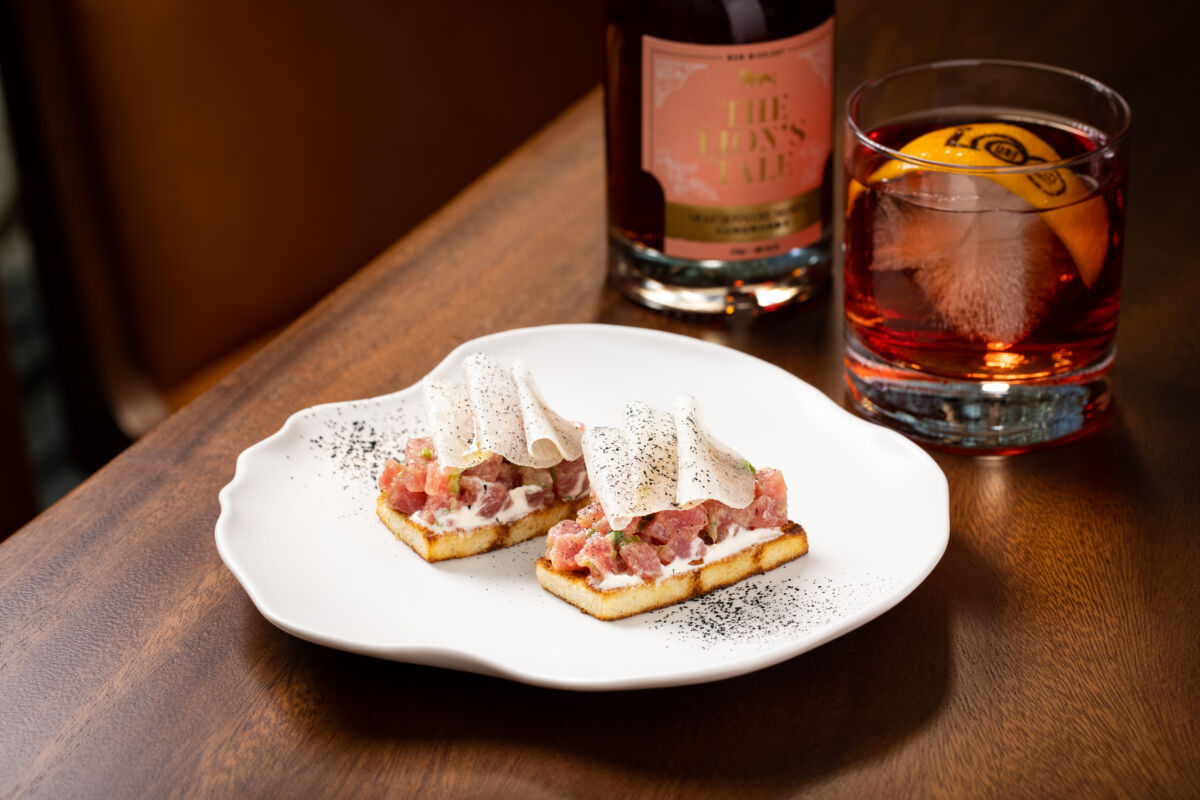
Tuna Tartare Toast; Photo credit: MGM Cotai
Can you tell us about the signature dishes on the menu at Grill 58?
Chefs are usually wary of designating something a signature dish. If we are serving a dish, any dish, it’s because we feel there’s a connection to it and we want it to be on the menu. Having said that, some dishes have indeed more of a connection or more of a story and, most importantly for me a strong sense of the restaurant’s DNA.
One of the dishes at Grill 58 that really does have a strong story is a starter, the tuna tartare toast. It mostly came about from a collaboration with my sous-chef Han, who’s amazing and I’m super happy to have on the team. He made a delicious tuna tartare that we played around with a bit, added in the grill element, and made it more plateful. Instead of a plated tuna tartare that people have with Melba toasts, we use perfectly cut little brioche toasts grilled on the lychee wood to order, which are then built elegantly and dusted with bamboo charcoal, sort of tying up the whole dish together. People can pick it up and eat it in two bites, they melt in the mouth. This dish is all about that collaboration, the celebration of the grill, and the excellent ingredients. It’s both on the Bar 58 and Grill 58 menus.
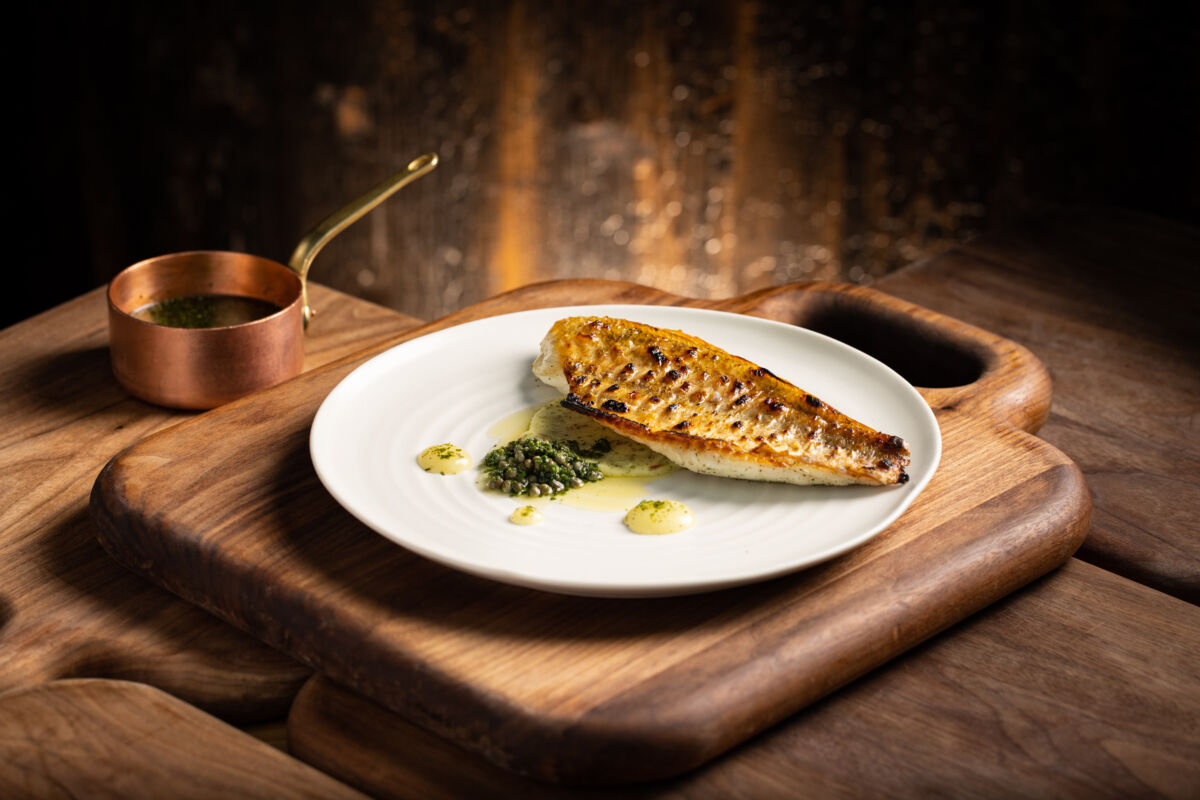
Grilled Sea Bream; Photo credit: MGM Cotai
Another signature dish is the grilled red sea bream from Japan. We scale the fish with a knife in a Japanese manner, clean it really well with a little bit of saltwater, remove the bloodline, dry it well (it’s important that there is no moisture left) and dry-age it for up to two weeks. Dry-aging tenderizes the meat, it becomes almost creamy in texture and intensifies the flavor. After that, the fish is filleted, seasoned with seaweed and kombu salt, and charcoal-grilled on the skin until it’s blistered, charred and crispy. It’s served simply with seaweed mashed potatoes and a nice brown butter sauce.
The last signature dish I’d select is our American Wagyu bone-in ribeye from Snake River Farms in Idaho, U.S. It’s an excellent American wagyu that has just the right amount of fat, the equivalent to an Australian M7 grade. We dry age it for 28 days, trim it and cook it with a combination of binchotan and lychee wood. They each have their own characteristics that they bring to the flavor and temperature of cooking. We add just the right amount of lychee wood onto the binchotan charcoal for a clean but smokey flavor throughout the meat. Dry-aged beef takes the smoke so much better.
Macau is a vibrant dining destination with lots of choices. In your opinion, what makes the dining experience at Grill 58 stand out? What can guests expect?
Aside from attentive and caring service, Grill 58 has some unique features, such as the open environment overlooking The Spectacle with its Sea Odyssey show. It’s amazing. I’m also not sure whether it is possible to find the Himalayan salt dry-aging room that we have anywhere else in Macau. But mostly, our devotion to expanding the horizons of dry-aging, combined with the charcoal and lychee wood grill, and the teppan experience make for a diversity of offerings at Grill 58 that you can’t find elsewhere. It’s about the celebration of the grill. What we do here is true craftsmanship in dry-aging and cooking with fire. After all, this is what made me move to Macau.
A lot of our guests come to Grill 58 to celebrate, they want to be wowed. They want the attention and detail of being welcomed at the reception, the amuse-bouche, the meal throughout. Our guests can expect to have great food, great service, find something comforting, and at the same time something that they can recognize. Even if it’s a new experience for them, they still need to look at the menu and recognize the food. Overall, those who visit Grill 58 can expect to find what they’re looking for, which is really important to me.
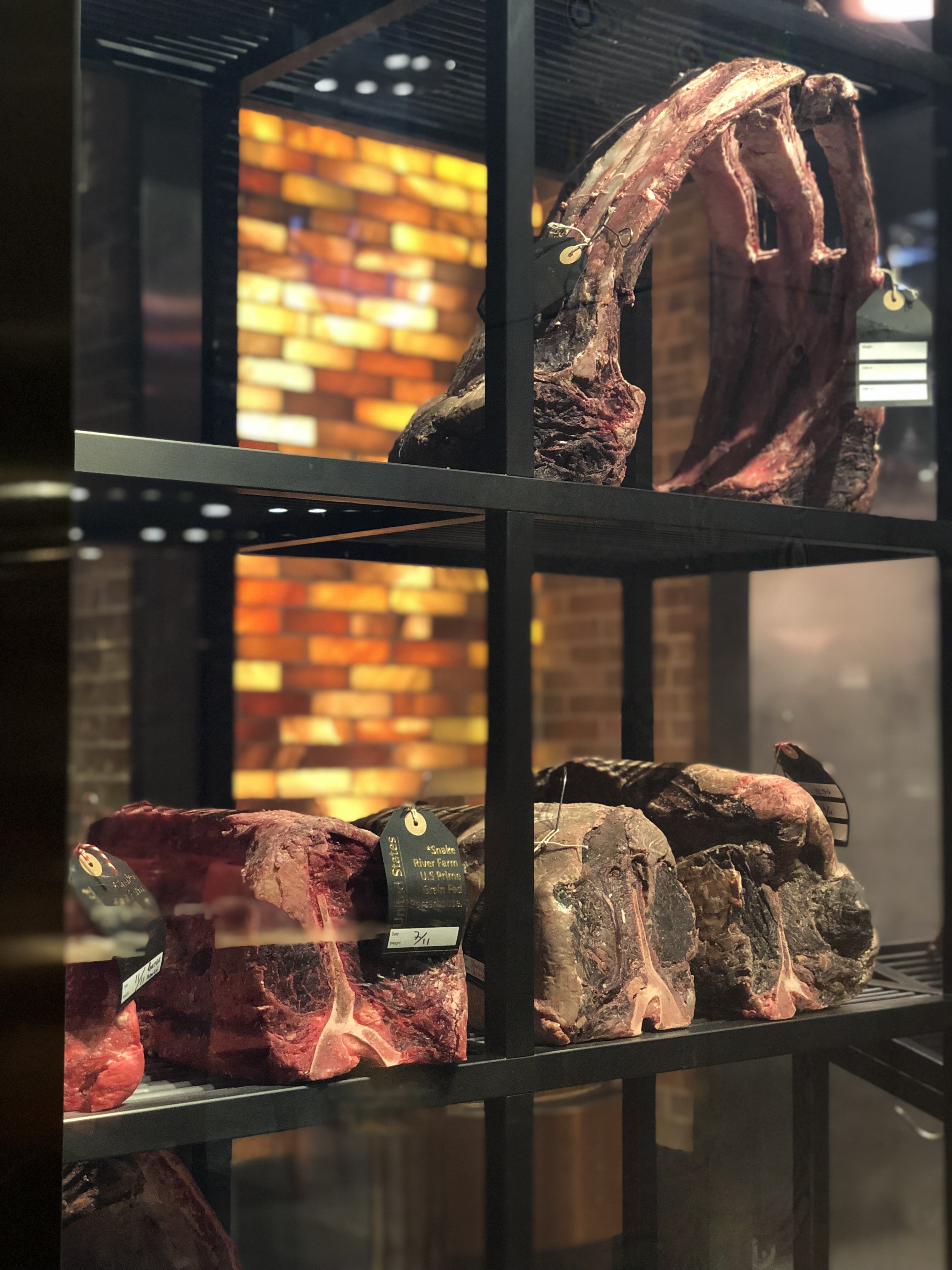
Dry Aging Room; Photo credit: MGM Cotai
Grill 58 features Macau’s only Himalayan salt meat-aging room. What does this process do to meat? Why is it important?
The Himalayan salt helps to balance the whole process and adds an anti-microbial element to it. It helps in doing longer aging without that sort of funkiness in flavor, allowing the beef to develop a new aged beef flavor. When you try it you can tell that it’s mature but it shouldn’t taste really funky, sort of speak. The dry-aging itself is an enzymatic breakdown of the meat that tenderizes it. It’s an intensification of the flavor because the meat loses moisture. The key factors in dry-aging are low temperature, good airflow, and relatively low humidity, although not too dry. The way we control those factors is crucial.
What are the special or uncommon dry-aged cuts in Grill 58?
The cuts themselves are relatively standard because we try to dry-age only bone-in cuts. The important thing is the selection of the meat itself. We have a good selection of different meat from different countries that we dry age based on their feed and how fat they are. They have different texture profiles depending on those two factors. But we do have a few specials or uncommon ingredients that we dry age: the signature sea bream I mentioned before, pork, which we slightly age, and we’re currently working on duck aging too. Duck really improves with aging and I hope we’ll have it on the menu soon. We’ll be aging other fish for Christmas too.
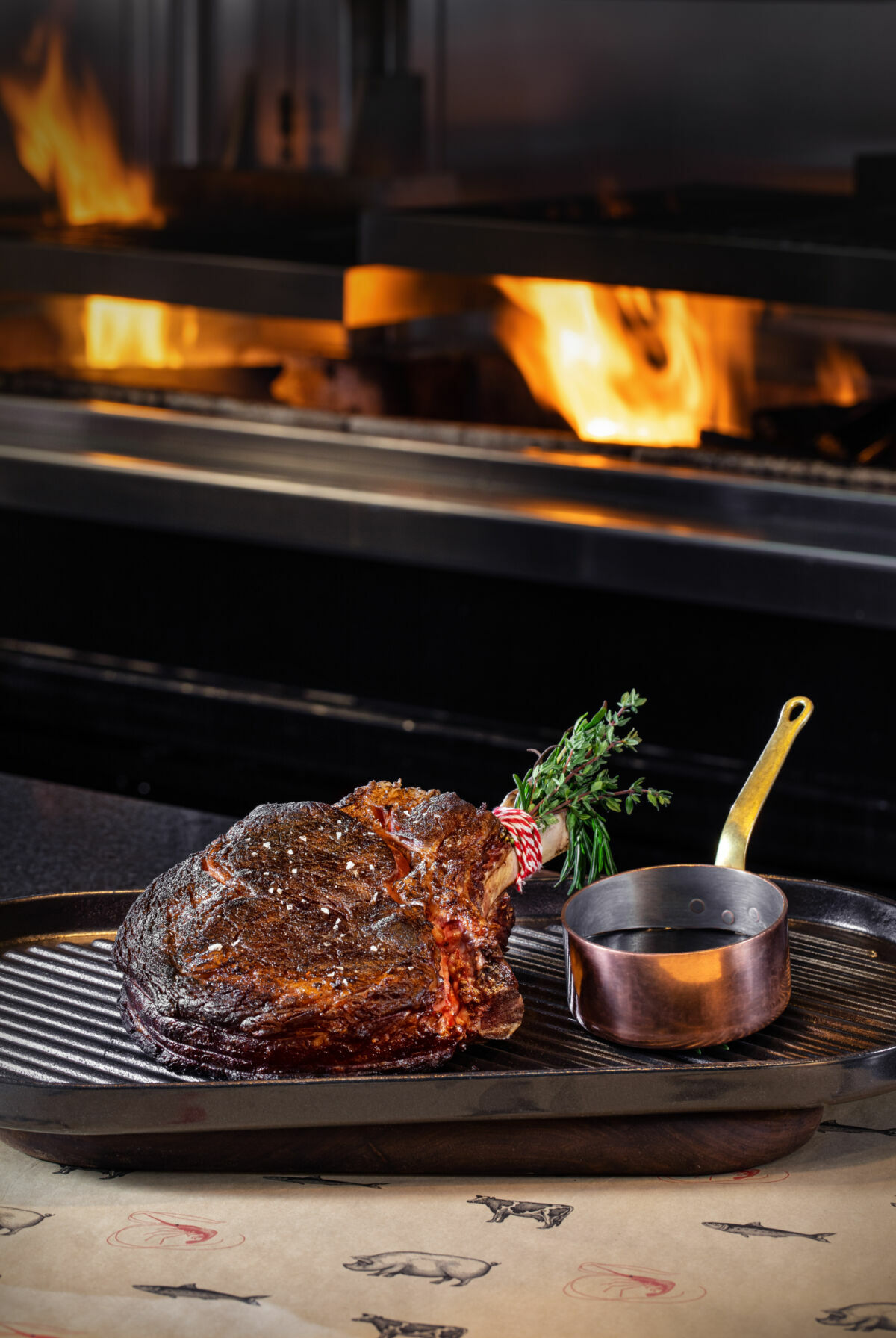
Snake River Farm Wagyu Bone In Ribeye; Photo credit: MGM Cotai
Using wood fire to grill a piece of fine meat might seem simple (almost primal) yet, experienced in a restaurant such as Grill 58, it’s probably one of the most soul-satisfying meals one can have. What do you think makes this fare so enticing?
Cooking with fire is a primordial connection. It’s the flavor of the earth all in one bite: the animal from the land, the wood smoke from a forest, the sea salt minerality, and a touch of funk from the dry aging.
Do you have a preferred meat cut to work with (or savor)?
Yes. Unaged would be our Australian wagyu bavette. For dry-aged it would be the short loin because we get porterhouse, T-bone steaks, some dry-aged tenderloin, and bone-in striploin from it. Both of these are new additions to the menu at Grill 58. I prefer these two both to work with and to eat.
When you’re not working, what do you do in your free time?
Mostly outdoor activities like hiking, swimming, and biking. I also go to the gym almost every day. At home, I usually read, cook, and do a little bit of gardening on my balcony.
What do you think of Macanese cuisine? Have you tried it? What are some of your favorite spots to eat around town?
My first contact with Macanese cuisine was during quarantine and I must say I wasn’t too impressed (laughs). I do like pork chop buns, chili prawns and I love getting egg tarts at Lord Stow’s. For a pork chop bun, I usually go to Hon Kee Café in Coloane, it’s amazing. I love that place, they also cook with fire.
Aside from MGM’s lovely restaurants, one of my favorites being Five Foot Road, the restaurants I eat out at most in Macau are Indian Garden, and Fernando’s when I want to feel like I’m in Europe.
Savor Chef Conor’s creations and discover the new dishes on the menu at Grill 58 in MGM Cotai
Grill 58 MGM Cotai Avenida da Nave Desportiva, Cotai, +853 8806 8888, www.mgm.mo

